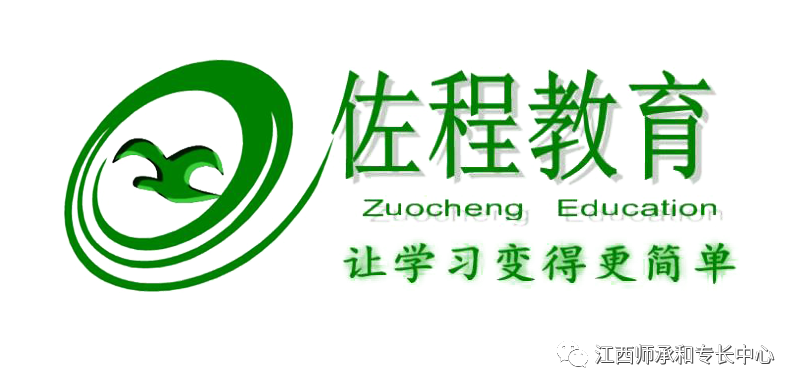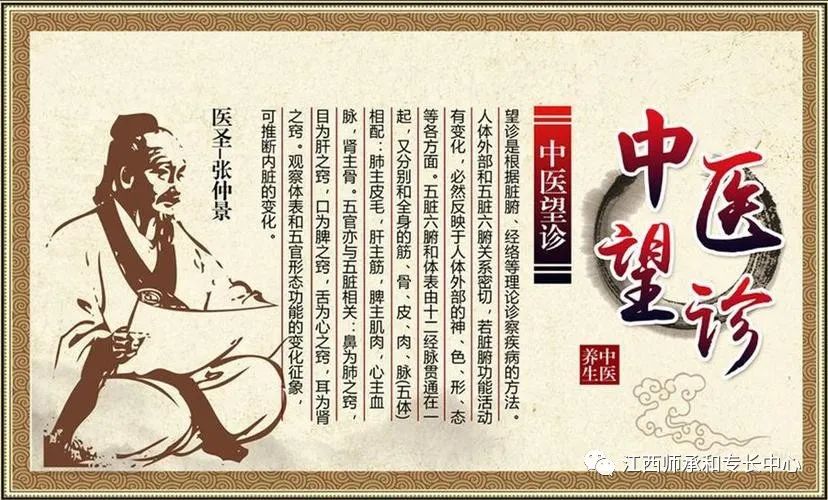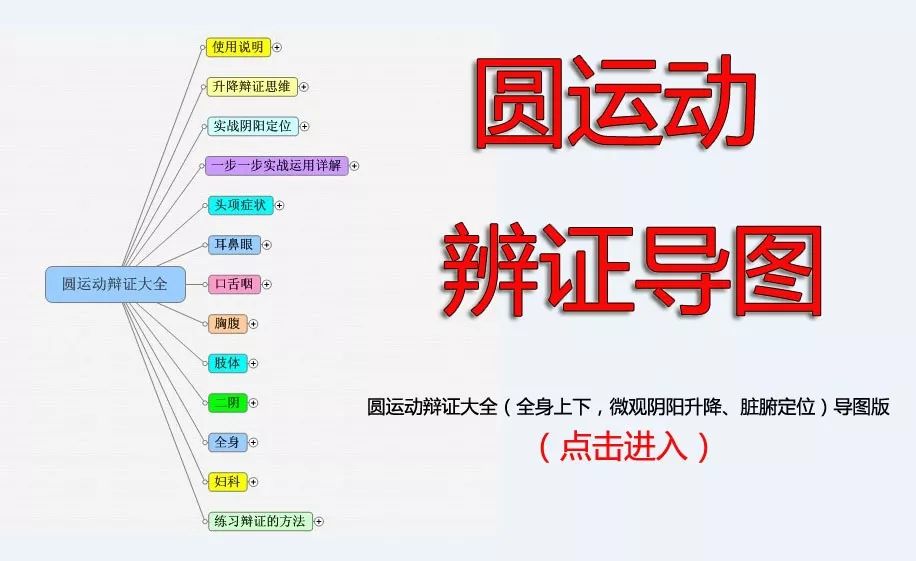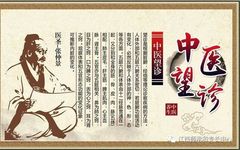
1. Observation (Wang Zhen)
(1) General Observation: Observation is the foremost of the four diagnostic methods, focusing on four aspects: spirit (shen), color (se), shape (xing), and state (tai). Observation of Spirit (Wang Shen): Refers to the vitality and consciousness. The state of the spirit reflects the severity of the illness and prognosis; a lack of spirit indicates death, while a strong spirit indicates life. Observation of Color (Wang Se): Color reflects the condition of the organs and the changes in disease. The five colors are green (qing), yellow (huang), red (chi), white (bai), and black (hei). Colors should be bright and subtle, with dark colors being the most undesirable. Observation of Shape (Wang Xing): Refers to assessing the patient’s physical strength and capabilities to infer the progression of the illness. Observation of State (Wang Tai): Refers to observing the patient’s dynamics. Different diseases exhibit different dynamics, and understanding these patterns can help predict the outcome of the illness.

1. Observation of Spirit: Calmness indicates a yin condition; brightness indicates a yang condition; confusion suggests a loss of fluids or heart blood deficiency; dullness indicates emotional disorders; depression indicates unfulfilled emotions; restlessness indicates heat diseases or impending loss of spirit; fatigue indicates overwork, kidney deficiency, or insufficient stomach energy; fainting indicates unclear consciousness, often due to heat or evil entering the heart.
2. Observation of Color (Se and Ze): Green indicates wind, often associated with liver diseases; red indicates heat, often associated with heart diseases; yellow indicates dampness, often associated with spleen diseases; white indicates cold, often associated with lung diseases; black indicates exhaustion, often associated with kidney diseases. Bright colors indicate new illnesses, while dull colors indicate chronic conditions.
3. Observation of Shape and State: Body shape (fat or thin) indicates conditions such as stroke (fat), qi deficiency (thick), emotional repression (fat), phlegm accumulation (fat), and blood deficiency (thin). Skin texture indicates the state of fluids; the density of pores indicates the state of the nutritive and defensive qi; the firmness of flesh indicates the state of stomach qi; the thickness of tendons indicates the state of liver blood; the size of bones indicates the state of kidney qi; the hardness of nails indicates the state of gallbladder fluids; the thickness of palms indicates the state of organ qi; a collapsed cervical vertebra indicates a severe illness; a bowing neck indicates deep heat causing spasms; a crooked mouth indicates stroke or facial paralysis; dry skin indicates internal pus or blood stasis; dull hair indicates sunken blood; a humped back indicates empty points in the governing vessel; a protruding chest indicates weakness or deformity; a stiff neck indicates wind or heat; and a swollen abdomen indicates qi or water retention.
(2) Localized Observation
1. Observation of the Head and Face: The face represents the Yangming channel, the forehead represents the heart, the left temple represents the liver, the right cheek represents the lung, the nose represents the spleen, and the chin represents the kidney. Shape: Swelling indicates conditions such as big head syndrome, abscesses, kidney edema, or wind edema. A bulging fontanelle indicates excessive fire in the governing vessel or brain diseases. A sunken fontanelle indicates congenital deficiency or qi and blood deficiency. An unclosed fontanelle indicates kidney deficiency or brain deficiency. Shaking the head in young, robust individuals often indicates wind invasion, while in older, weak individuals, it often indicates deficiency.
Face Color: White indicates deficiency and cold; yellow indicates dampness or heat; bright yellow indicates heat; pale yellow indicates spleen and stomach qi deficiency; red indicates heat; green indicates wind or cold; black indicates cold or pain; and dark colors indicate insufficient yang energy.
2. Observation of Hair: Normal hair is black; white indicates qi and blood deficiency; yellow indicates heat; sparse hair indicates blood deficiency; hair loss indicates essence and blood deficiency; hair in tufts indicates blood deficiency; dry hair indicates exhaustion of blood and qi; moist hair indicates sufficient blood and qi; and the quantity of hair indicates the state of menstrual blood and qi.
3. Observation of the Eyes: Bright eyes indicate vitality; dull eyes indicate deficiency; yellow sclera indicates jaundice; red eyes indicate liver or lung heat; blue eyes indicate liver disease; swollen eyelids indicate spleen fire or deficiency; red corners indicate heart fire; excessive tearing indicates liver heat; inability to open eyes indicates stroke; and floating eyelids indicate qi deficiency or the onset of water diseases.
4. Observation of the Nose: A blue nose indicates abdominal pain; a yellow nose indicates difficulty in defecation; a black nose indicates labor; a red nose indicates wind heat; a white nose indicates qi deficiency; and a black nose indicates exhaustion.
5. Observation of the Ears: Yellow-red indicates heat; blue-white indicates cold; black indicates kidney deficiency; and blue-black indicates pain.
6. Observation of the Lips: White indicates blood deficiency; black indicates kidney disease; red indicates heart disease; red-purple indicates severe heat or blood stasis; and blue indicates lung disease.
7. Observation of the Teeth and Gums: Black teeth indicate stomach heat; pale gums indicate blood deficiency; deep red gums indicate heat; and purple gums indicate extreme heat.
8. Observation of the Throat: A bright red throat indicates heat; a pale throat indicates cold; swelling indicates heat; and white patches indicate diphtheria.
9. Observation of the Tongue: The tongue tip represents the heart, the sides represent the liver and gallbladder, the root represents the kidney, and the center represents the stomach. A red tongue indicates heat; a pale tongue indicates deficiency; a purple tongue indicates blood stasis; a blue tongue indicates cold; and a swollen tongue indicates dampness.
10. Observation of Phlegm: Thick phlegm indicates cold; thin phlegm indicates heat; yellow phlegm indicates heat; and blood-streaked phlegm indicates lung heat.
11. Observation of Blood: Watery blood indicates weakness; pure blood indicates heat; blood with food indicates stomach blood; and blood with phlegm indicates lung blood.
12. Observation of Stool: Loose stools indicate cold; hard stools indicate heat; blood-streaked stools indicate heat; and undigested food indicates internal cold.
13. Observation of Urine: Cloudy urine indicates heat; clear urine indicates cold; blood in urine indicates heat; and dark urine indicates kidney disease.
14. Observation of Limbs: Spasms indicate wind; weakness indicates deficiency; swelling indicates water retention; and atrophy indicates deficiency.
15. Observation of Fingers and Nails: Concave nails indicate blood deficiency; convex nails indicate fungal infections; and deformed nails indicate rheumatism.
16. Observation of Skin: Swelling indicates water or heat; dryness indicates deficiency; and rashes indicate various conditions.
17. Observation of the Chest: A chicken breast shape indicates lung fullness; a flat chest indicates susceptibility to lung diseases; and a barrel chest indicates lung expansion.
18. Observation of the Abdomen: A distended abdomen indicates qi or water retention; a hard abdomen indicates heat; and a soft abdomen indicates deficiency.
19. Observation of the Back: A humped back indicates wind invasion; a flat back indicates kidney failure; and a curved spine indicates deformity.
Note on Observation: 1. Be aware of the lighting when observing the patient’s complexion and tongue coating. 2. Consider the patient’s emotions and movements when assessing color and shape. 3. Be mindful of the influence of diet on tongue coating.

2. Listening (Wen Zhen)(1) Sounds: A. Speech: A loud, heavy voice indicates excess; a low, clear voice indicates deficiency; excessive talking indicates heat; incoherent speech indicates excess heat; a weak voice indicates deficiency; and loss of voice indicates a serious condition. B. Breathing: Normal breathing indicates health; wheezing indicates excess; shallow breathing indicates deficiency; and shortness of breath indicates a serious condition. C. Coughing: A dry cough indicates heat; a phlegmy cough indicates cold; a heavy cough indicates excess; and a weak cough indicates deficiency. D. Belching: Odorless belching indicates weakness; persistent belching indicates qi stagnation; and sour belching indicates food stagnation. E. Sneezing: Sneezing indicates an external wind-cold invasion; and prolonged sneezing indicates a recovery sign. F. Abdominal sounds: Water sounds indicate fluid retention; gas sounds indicate bloating; and intestinal sounds indicate cold. G. Infant crying: A loud cry indicates anger; a high-pitched cry indicates pain; a weak cry indicates deficiency; and a long, weak cry indicates hunger.
(2) Odors: A. Abnormal odors from the body indicate various conditions, such as foul odors from infections, sweet odors from diabetes, and sour odors from digestive issues.
3. Inquiry (Wen Zhen)(1) General Inquiry: Ask for the patient’s name, gender, age, ethnicity, place of origin, marital status, occupation, and address. Inquire about the patient’s main complaints, the onset date of the illness, and any factors that may have contributed to the condition. Understand the evolution of the symptoms and past treatments to refine the diagnosis. Inquire about the patient’s living environment, personality, habits, and any relevant medical history.
(2) Specific Symptom Inquiry: A. Inquire about fever: The timing and nature of the fever can indicate different conditions. B. Inquire about sweating: The timing and nature of sweating can indicate different conditions. C. Inquire about headaches: The timing and nature of headaches can indicate different conditions.

Follow us by scanning the QR code for more information…
Note: The various prescriptions, formulas, and acupuncture techniques mentioned in this article are for reference and learning purposes only for professional TCM practitioners. They should not be used as prescriptions or treatment plans. Please do not self-medicate, as this platform does not bear any responsibility for any consequences arising from such actions!
Copyright Notice:This article is sourced from the internet. We share articles and images from the internet, and the copyright belongs to the original authors and sources. This article is intended for educational sharing and dissemination of information, with no commercial purpose. If there are any issues regarding the content, copyright, or other matters, please contact the administrator for immediate handling.

